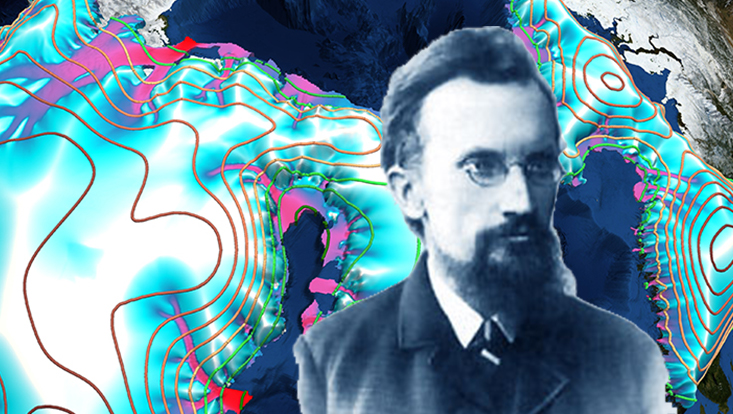How can we introduce climate protection on farms?
19 May 2020, by Stephanie Janssen

Photo: Raphael Rychetsky/unsplash
Agriculture has to become climate-friendlier. In Germany, the federal government’s climate targets call for reducing greenhouse-gas emissions produced in animal confinements and on crop fields by more than 30 percent by 2050. Yet it remains unclear how emissions at farms can even be measured. A survey conducted among 254 farms offers an initial indication: more than 60 percent of the respondents would like to make their operations climate-friendlier, but lack important information in this regard. Accordingly, a team at the CEN is now working on concepts for a smart tool to provide them with exactly that.
Dr. Kerstin Jantke from Universität Hamburg’s Center for Earth System Research and Sustainability (CEN) and her team conducted an online survey of 254 farms across Germany. They included organic and conventional farms alike, livestock farms and crop farms. Though the survey makes no claims to be representative, it nevertheless offers valuable insights into how a tool for regulating emissions could work – and how it couldn’t.
“Fundamentally speaking, climate change is very important for farmers; more than half are already feeling its effects firsthand,” says environmental researcher Kerstin Jantke. In this regard, two aspects are particularly important. The farms can directly see the impacts of climate change in terms of their yields. At the same time, the farms themselves emit greenhouse gases, which are chiefly produced in stalls, stables and other confinements, and in connection with fertilizers. According to the German Environment Agency (Umweltbundesamt), agriculture accounts for more than seven percent of Germany’s overall emissions; worldwide, the number is more than ten percent.
Based on the results of the survey, 60 percent of the farmers would be willing to reduce their greenhouse gases, but don’t feel they have sufficient information. Most of what they know in this regard comes from farming magazines. At the same time, 40 percent of those surveyed aren’t interested in reducing emissions: they claim they don’t have the time, fear financial losses, are already doing what they can, or don’t consider the topic to be relevant.
Lack of appreciation from the public
Very few of those farmers surveyed have already attempted to estimate the emissions their farms produce. Further, many of them don’t know which of their farming choices lead to more emissions, and which lead to less. For example, depending on the weather conditions, spreading chemical fertilizer on one day can produce an inordinate amount of additional greenhouse gas; on another day, it produces next to none. Specially designed computer programs are capable of identifying these aspects and making appropriate recommendations. They can, for example, suggest ideal dates for planting, or for spreading fertilizer, which strike an optimal balance between (high) yield and (low) emissions.
Only a quarter of the farmers surveyed use computers for their work. But more than half claimed they would be willing to use an innovative computer tool if they received financial compensation for doing so. Generally speaking, motivating factors include financial incentives like climate protection subsidies (70 percent) and a potential advantage on the market, e.g. in the form of a climate seal (75 percent). In contrast, half of those surveyed considered a concrete emissions limit for their farm to be demotivating.
In addition, many survey participants seem to desire appreciation from the public: after their own convictions (75 percent), positive recognition from the public (70 percent) was cited as a major motivating factor when it comes to making their farms climate-friendlier.
Seal, smart tool, and incentives
Jantke and her team used these findings to develop a concept for measuring greenhouse gases on farms. By 2050, agricultural emissions have to be reduced by more than 30 percent, based on the level from 1990. “Without state regulation, that’s not going to be possible,” says Jantke. Yet there are no concrete ordinances in place. If there were a suitable instrument, the question remains: how can farm emissions be measured? This is where it gets complicated: on crop fields and in animal confinements, there isn’t just a single source of emissions. Every field and every animal produces its own emissions; moreover, the weather can have a substantial influence. Given this combination, it would be virtually impossible – or incredibly expensive – to precisely measure the climate-relevant gases emitted by every single farm.
Consequently, the team has proposed a concept that would use specially designed scientific models from climate research to calculate the emissions. If these models were combined with basic information on each farm, there would be no need for expensive measuring technologies. Further, their tool could be used virtually universally, at mixed farms and specialized crop or livestock farms alike. “Together with financial incentives to reduce emissions from the state and a seal they can put on their products to reflect their efforts, we could start introducing climate protection on farms,” says Jantke.
More information
Scientific article:
Jantke K, Hartmann MJ, Rasche L, Blanz B, Schneider U, (2020): Agricultural Greenhouse Gas Emissions: Knowledge and Positions of German Farmers, Land 2020, 9(5), 130; https://doi.org/10.3390/land9050130
Schneider U, Rasche L, Jantke K (2020): Farm-level digital monitoring of greenhouse gas emissions from livestock systems could facilitate control (pdf), optimisation and labelling LANDBAUFORSCH, J Sustainable Organic Agric Syst · 69(1):9–12,
Doi: 10.3220/LBF1580734769000
Contact:
Dr. Kerstin Jantke
CEN – Center for Earth System Research and Sustainability
CLICCS – Cluster of Exvellence Climate, Climate Change, and Society
Universität Hamburg
E-Mail: kerstin.jantke@uni-hamburg.de
Phone: +49 40 42838 2147
Stephanie Janssen
Outreach
CEN – Center for Earth System Research and Sustainability
CLICCS – Cluster of Exvellence Climate, Climate Change, and Society
Universität Hamburg
E-Mail: stephanie.janssen@uni-hamburg.de
Phone: +49 40 42838 7596


